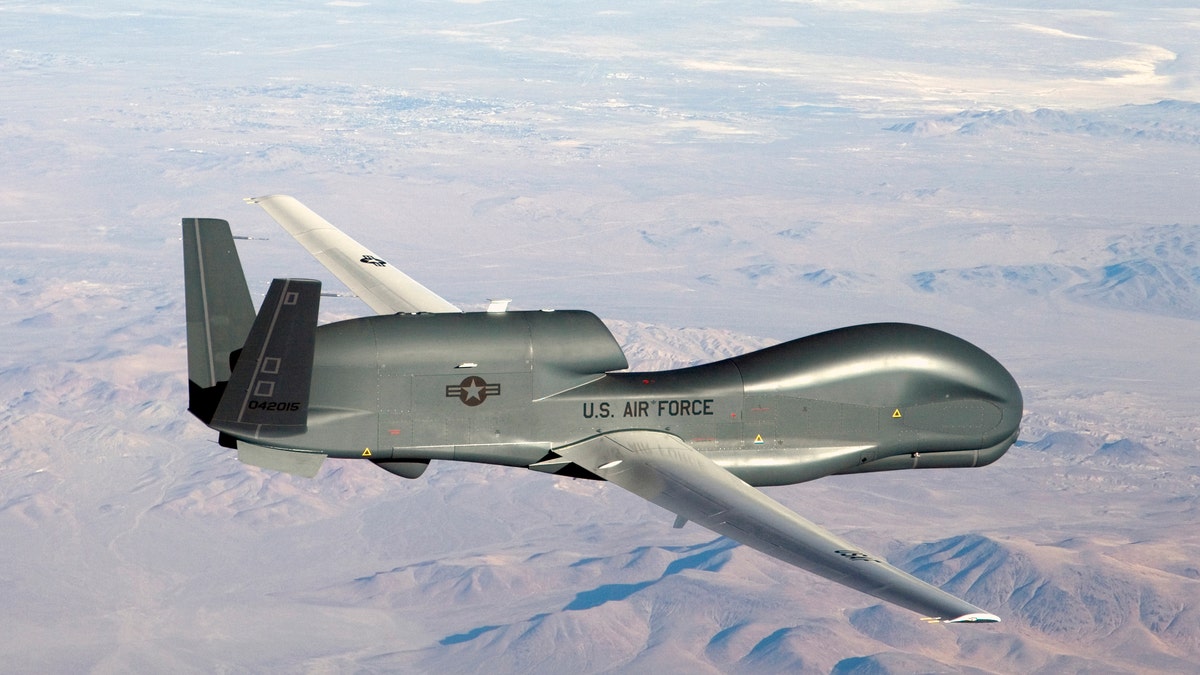
An undated U.S. Air Force handout photo. (REUTERS/U.S. Air Force/Bobbi Zapka/Handout)
To help meet the rising demand for drone surveillance and reconnaissance, the United States Air Force just announced it now allows enlisted pilots (including non-officers) to fly in missions involving unmanned aircraft. Essentially, instead of narrowing the potential field of pilots strictly to commissioned officers, any enlisted Air Force pilot now has the ability to contribute to the USAF's ongoing Global Hawk operations. Considered a "strategically vital mission," it's apparent the Air Force is doing all it can to assure a typically hard-to-staff area of its agency remains a thriving cog in the military machine.
Announced via a press release, the Air Force's new initiative is intended to help boost surveillance efforts and create an innovative new approach to "high-demand missions." Unlike other branches of the U.S. armed forces, the Air Force can't easily maintain a large, active labor force -- so this move to give enlisted pilots access to Global Hawk missions is designed to increase the number of available servicemen. Moving forward, the branch expects to increase its global drone efforts, thus opening the door for even more pilots.
"Our enlisted force is the best in the world and I am completely confident they will be able to do the job and do it well," said Deborah Lee James, Secretary of the Air Force. "The RPA enterprise is doing incredibly important work and this is the right decision to ensure the Air Force is positioned to support the future threat environment."
James later points out this isn't the first time the Air Force has decided to allow enlisted personnel into an otherwise advanced area of its day-to-day happenings. Previously, with the branch's space mission arena, the Air Force gave enlisted servicemen the go ahead to contribute to satellite operations, effectively increasing their responsibilities. So far, their implementation into the programs has been met with positive response, reportedly growing leadership opportunities and normalizing operations.
"We are taking action now to address future ISR (Intelligence, Surveillance, and Reconnaissance) needs," said Chief of Staff of the Air Force, General Mark A. Welsh III. "Not too long ago, we took the best of both officer and enlisted development tracks to lead the space mission. A similar model can be applied to our Global Hawk operations."
The integration of enlisted pilots into the Global Hawk program isn't expected to impact the current labor force of commissioned officers. As the Air Force moves forward and begins rolling out the initiative, it says it plans on remaining "deliberate in its approach," focusing on education and learning to assure a high level of competency. Welsh says that if the enlisted pilots prove successful with the Global Hawks, it's likely the agency introduces a similar approach for other weapons systems.
Related: The U.S. Air Force expects to equip F-15 fighter jets with laser weapons by 2020
Branch flexibility and operational success notwithstanding, the Air Force is no doubt scrambling to address a serious need; it needs more drone pilots, plain and simple. With the Air Force offering $125k to any drone pilot who agrees to serve five more years, it's clearly doing anything it can to retain a steady labor force. Considering drone operations -- however controversial they may be -- remain a pillar of the U.S. military, it's not particularly surprising to see the Air Force pulling out all the stops to keep its programs functioning and its pilots satisfied.
